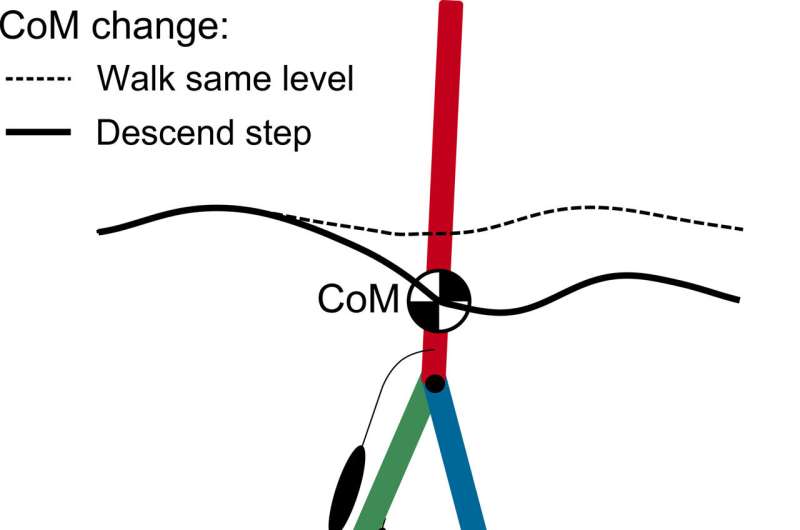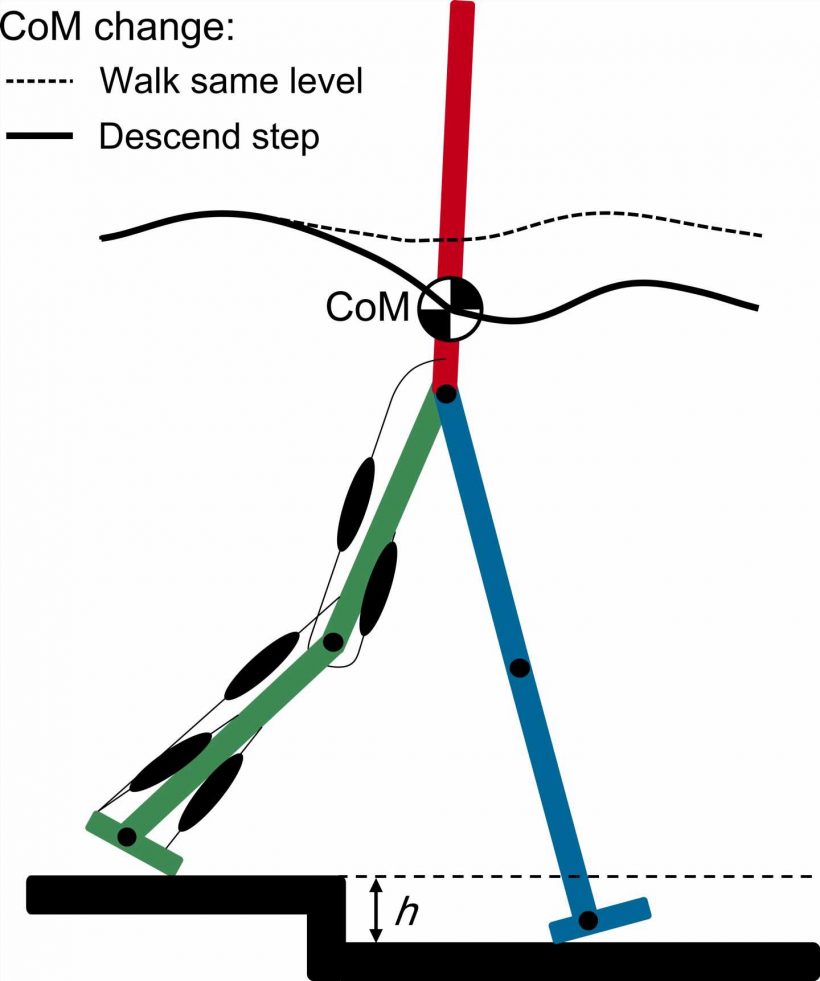
Anyone walking in the city has had to adjust their gait again and again to navigate curbs or steps. Every person develops control strategies for the changes in muscle activity required for this, which protect them from tripping and falling accidents. Researchers at the University of Bayreuth have now analyzed these strategies and their effectiveness using computer simulations. They were able to show that a strategy based on visual perception, which prepares the muscles for differences in height at an early stage, protects far better than situational muscle reflexes. Their study is presented in Scientific Reports.
If curbs, steps or other differences in height of the ground are perceived in advance, the muscles can adjust accordingly. The knee and ankle joints are more bent, and the height of the body’s center of gravity changes. This anticipatory muscular adaptation is referred to in research as an anticipatory control strategy or “high-level strategy.” Another, less demanding “low-level strategy” is based solely on muscular reflexes. These reflexes are only triggered during walking when the step from the curb or stair step has already been taken, and the risk of tripping and falling is imminent.
“In our study, we sought to discover what influence these different strategies have on gait behavior and how significant they are for safely overcoming height differences. However, the problem arose that we can never completely switch off either of the two control strategies as humans. Therefore, it is difficult to determine the influence of a single strategy with selected test subjects. With computer simulations, however, such analyses are possible,” explains the head of the study PD Dr. Roy Müller, research associate at the Chair of Exercise Science at the University of Bayreuth and Head of the Gait Laboratory at Klinikum Bayreuth GmbH—Medizincampus Oberfranken.
The researchers based their computer simulations on a neuromuscular model in which the muscles are stimulated by reflexes alone. With this model, effects of the low-level strategy can be shown in isolation. As it turned out, with this strategy an efficient, accident-preventing adaptation of walking to a suddenly lower surface is only guaranteed if the height difference does not exceed three centimeters. Curbs, however, are usually 5 to 12 centimeters high. Apparently, a control strategy based only on reflexes is not sufficient to avoid falls.
Therefore, an additional anticipatory strategy was added to this model as part of the study. The computer simulations now showed significant benefits. The combination of a high-level and a low-level strategy ensured that height differences between 3 and 21 centimeters could be managed without accidents. “This result clearly underlines the importance of anticipatory adaptation in everyday life. It proves that people who are only able to make these adjustments to a limited extent due to reduced vision or neuronal diseases have a significantly higher risk of falling,” says Müller.
Source: Read Full Article
